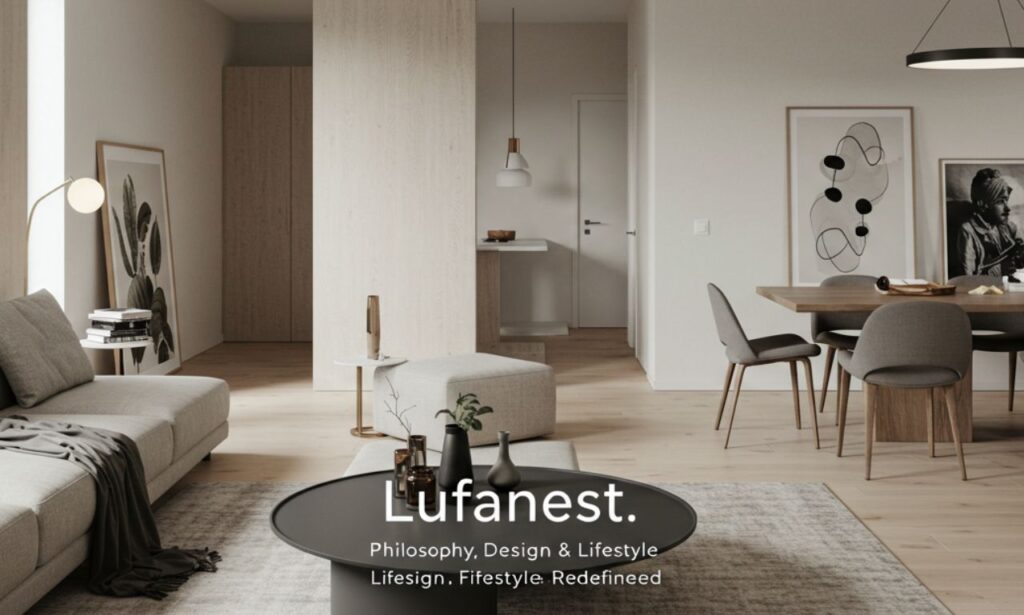“Lufanest” is an emergent concept or philosophy increasingly discussed in design, lifestyle, and wellness circles. Though there’s no single, official “Lufanest product” or company universally agreed upon, it refers broadly to spaces, products, and systems that combine:
-
Light, airiness, calmness (“Lufa” suggesting luminous, airy, uplifted feeling)
-
Comfort, nest-like safety, intuitive design, and sustainability
The term seems fairly recent (2025 and onward), appearing in blogs, wellness, interior design, technology-philosophy sites. It is partly a reaction to modern overstimulation, digital overload, cluttered design, disposable goods, and environments that don’t respect well-being.
Lufanest Philosophy: Key Principles & Pillars
Pillar 1: Seamless Intuition & Simplicity in Design
Lufanest favors designs that feel effortless. Interfaces, physical spaces, products all aim to anticipate user needs rather than demand extensive interaction. Minimal friction, clean visuals, simple usability are central.
Pillar 2: Emotional Comfort & Human-Centered Spaces
Design under Lufanest is meant to feel warm, calming, supportive. Think soft textures, natural materials, warm lighting, spaces that reduce anxiety rather than spur overstimulation. It’s about fostering emotional well-being.
Pillar 3: Sustainable Harmony
Sustainability is not an afterthought but built into Lufanest. Long-lasting materials, reuse/repair, low waste, energy efficiency, eco-friendly sourcing—in both physical and digital spheres.
Pillar 4: Light, Airy Aesthetics & Decluttered Space
Visual simplicity, open layouts, minimal but meaningful decoration. Letting natural light, soft tones, ventilation, and breathable layouts define how space or product feels. Decluttering is both literal and figurative.
Benefits & Advantages of Living Lufanest
Embracing the Lufanest philosophy may offer:
-
Reduced Stress & Improved Mental Well-being
Spaces and products that soothe rather than overwhelm tend to lower anxiety, promote calm. -
Greater Focus & Clarity
Fewer distractions, less clutter, intuitive tools all help one concentrate better. -
Positive Environmental Impact
When sustainability is built in (durable materials, low waste) the ecological footprint is reduced -
Enhanced Comfort in Daily Life
Comfort doesn’t just mean soft pillows; it includes lighting, airflow, quietness—dimensions that affect quality of life. -
Mindful Consumption & Value
Choosing quality, meaningful items over disposable clutter, and adopting a mindset that favors long-term satisfaction.
Challenges, Misconceptions & Practical Limitations
-
Vague Definition / Overuse in Marketing
Because Lufanest is a philosophy more than a branded product (so far), some usage is vague or simply style-marketing. It risks becoming buzzword rather than substance. -
Cost of Implementation
Natural materials, high-quality design, sustainable solutions often cost more. Not everyone can afford full implementation. -
Cultural and Contextual Fit
What feels “airy, luminous, comfortable” in one culture may differ in another. Local climate, space constraints, budget, customs affect how Lufanest is meaningfully applied. -
Balancing Technology and Comfort
Too much tech—even if intuitive—can backfire. Notifications, updates, demands can intrude; the philosophy demands tech be supportive rather than demanding.
How to Incorporate Lufanest Into Your Life: Tips & Steps
You don’t need to redesign your entire home or replace everything at once. Here are practical ways to start:
-
Declutter One Area First
Pick a space—desk, bedside, kitchen counter. Remove items that don’t serve comfort or function. Let light, air, and vision flow. -
Choose Natural Materials & Soft Lighting
Swap harsh lights for warm bulbs, synthetic fabrics for cotton/linen, plastic for wood or recycled materials. -
Adopt Calm Tech Habits
Disable unnecessary notifications, use interfaces with dark/light modes, choose apps known for minimalism. Let tech fade into the background when not active. -
Bring Nature In
Plants, open windows, daylight, perhaps small indoor water features or natural soundscapes encourage tranquility. -
Mindful Routines
Design daily rituals—morning light exposure, quiet as possible evenings, sensory comforts (soft textures, pleasant smells) to reduce sensory overload. -
Focus on Sustainability
Choose durable items, repair rather than replace, recycle sustainably, consider the environmental impact of what you buy.
Real-World Examples & Case Studies
While there are not yet widely reported large companies branding themselves purely as “Lufanest,” there are multiple emerging examples consistent with the philosophy:
-
Designers making “Scandinavian minimalism with added warmth” interiors, using pale woods, soft textiles, lots of natural light.
-
Tech products that offer “calm mode,” “night mode,” or “ambient mode”—not just dark themes, but changing color temperature, reducing blue light.
-
Communities or co-living spaces built around green architecture, shared resource gardens, communal spaces that favor openness and connectivity.
These examples show that Lufanest is already influencing many designers, architects, app-creators.
Why Lufanest Matters in Today’s World
Modern life brings:
-
Overload—visual, digital, sensory.
-
Rapid change; stress around uncertainty.
-
Environmental concerns: the climate crisis, unsustainable production.
-
A yearning for comfort, calm, authentic connection rather than flashy aesthetics.
Lufanest responds to many of these. It gives a direction: design and living that cares for the human inside us, not just productivity, not just trendiness.
For makers, brands, and consumers, Lufanest suggests that markets will favor products and spaces that combine simplicity, comfort, and sustainability. Empowered by awareness of mental health and environmental impact, many are seeking this kind of design philosophy.
Future & Implications of Lufanest
As this concept gains traction, here are areas where it might develop:
-
Products and brands explicitly labeling themselves “Lufanest” inspired—home decor lines, furniture, tech gadgets.
-
Design education integrating Lufanest principles into architecture, industrial design, UX/UI.
-
Wellness and mental health space using Lufanest style environments, apps, to support calm, recovery, rest.
-
Sustainability regulation and standards might align with Lufanest values, pushing for renewable materials, longevity, repairability.
-
Hybrid digital-physical spaces—offices, coworking, homes that blend natural design, soothing aesthetics, and smart technology seamlessly.
Conclusion: Is Lufanest for You?
If you sometimes feel overwhelmed by clutter—be it physical or digital—and wish your life or space felt calmer, more intuitive, more sustainably grounded, then Lufanest might resonate strongly with you.
It’s not about perfection; it’s about intent. Even small changes aligned with Lufanest principles can make environments (home, work, digital) more nourishing.






